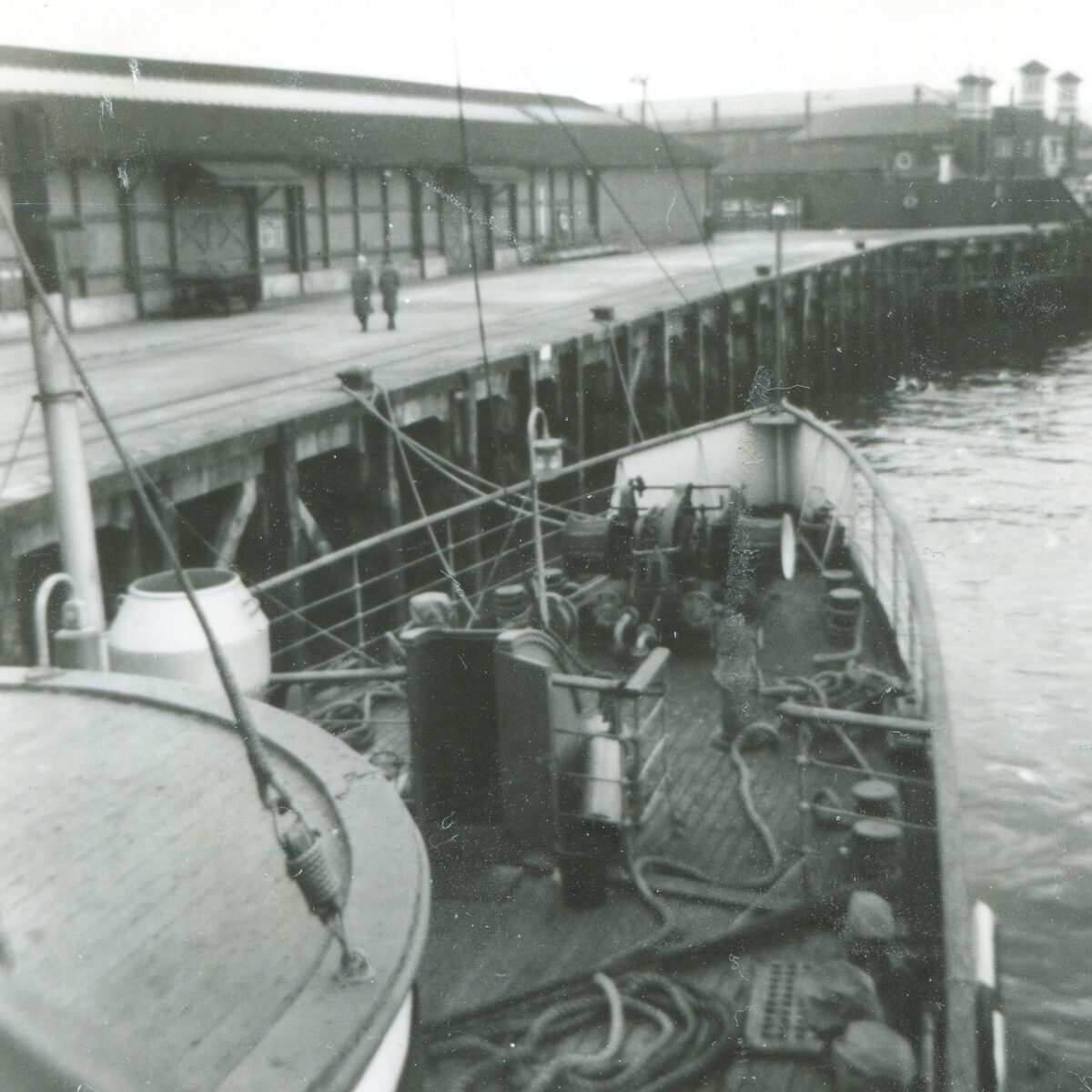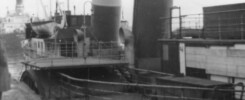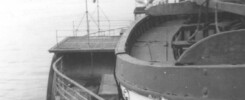
So we were ready to go. About 4pm the pilot came aboard and by 5pm we were off and sailing down the Clyde into the gathering darkness and out towards the sea. Once again I was on the wheel taking instructions from the pilot. “Starboard easy. Steady so. Steer 265 degrees.” That sort of thing.
Then as we all started to relax and enjoy the trip the sound of the paddle beat slowed down and eventually stopped. Word came up that the boiler feed pump had packed up. So there was nothing for it. We dropped anchor off the Warden Bank mid way between Dunoon and Cloch Point.
I remember the pilot being a tad uneasy about this pointing out that in this vicinity there are two electricity cables and one gas pipeline connecting the Cowal peninsula to the mainland. So as we watched the unfolding fireworks displays on the shore on this Guy Fawkes night we also kept a weather eye on the lights in Dunoon to see if our anchor might inadvertently switch them off.
With the feed pump fixed we were off again but by then we were running low on boiler water. Arthur Blue recounts “With the pump eventually back in service I remarked to the fireman that he should give the boiler a good dose of feed water to be met with the reply that the reserve feed tank was now nearly empty. Oh dear!”
On we sped into the night past Largs, the Cumbraes and on out to sea with Arran on our starboard side. Then off Pladda, with its light group flashing three every thirty seconds, the sound of the paddle wheels slowed once again and our hearts sank. Captain Woods and I were the only two on the bridge so he sent me down to find out what was wrong. Fortunately nothing serious. Just an adjustment needed and we would be off again.
When I returned to the bridge to report this I found Captain Woods on the wheel trying to turn the ship to port away from Pladda. I naively thought that if there had been a problem we could just have dropped the anchor once again like we had done off Dunoon but Captain Woods put me straight on that. Out here the depth of water was up to 50 fathoms (100m in today’s money) and we didn’t have enough chain for that. Even within a couple of cables of Pladda there was still up to 20 fathoms (40m).
In those days not only were the charts all marked up in fathoms rather than metres as they are today but the international buoyage system and the individual meanings of many of the international code of signal flags were different too. Take just a couple of examples. Starboard hand buoys were back then painted black and green buoys were used to mark wrecks. And what is today’s probably most used code flag “A” (blue and white swallow tail) which now signifies “I have a diver down” back then meant “I am conducting speed trials”. And so on.
One little point of detail I learned from Captain Woods that night when looking at the light flashing on Pladda. He told me that when counting the time between the groups of flashes of such lights it is best to insert an “and” between the counts. It stops you counting too fast. So count one and two and three and four and five and so on and you will be more accurate.
It was pretty calm that night and very dark out there. But the wheelhouse itself was illuminated not only by the usual glow from the light in the compass bowl but also by the light in the emergency telegraph right next to it which blazed forth and was therefore a tad distracting. Captain Woods asked me to look in the light box and switch it off but, as it happened, on my explorations of the ship I had already noticed that it didn’t have a separate switch but was on the same circuit as the binnacle. So I passed this information on. “Oh dear” was the response. And as we needed to see the compass the emergency telegraph light stayed on that night too. The following morning one of the crew was delegated to take out its bulb.
Shortly after midnight we arrived off Stranraer and dropped the anchor planning to go in to take on more water and drop off the Lamont’s engineer at first light.
Continue to part 7 of 13 here or go back to part 1 here.
Kingswear Castle returned to service in 2023 after the first part of a major rebuild which is designed to set her up for the next 25 years running on the River Dart. The Paddle Steamer Kingswear Castle Trust is now fund raising for the second phase of the rebuild. You can read more about the rebuilds and how you can help if you can here.
John Megoran
This article was first published on 5th November 2020.


